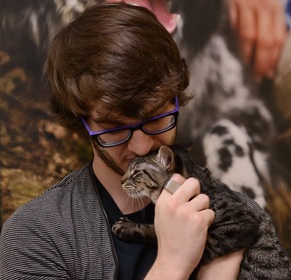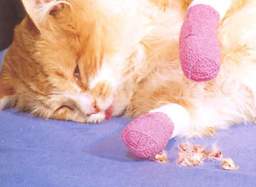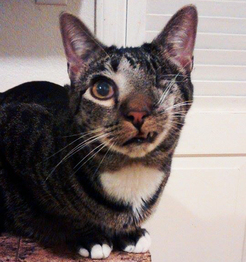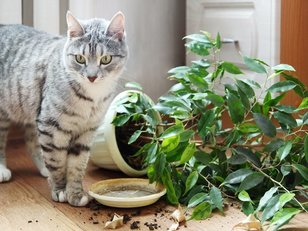
Why adopt a rescue kitten or cat? Why not buy one from an ad on the Internet or from a pet store? There are many reasons -- all of them humane.
The growth of the Internet has spurred the growth of ads selling pets. But it also provides anonymity to a more insidious growth: that of kitten mills and “backyard” breeders, people who breed their own cats specifically for profit. It helps them avoid accountability when they sell unhealthy or mistreated pets to unsuspecting and overly eager buyers. And it only serves to confirm the axiom: “buyer beware.”
Each time a cat is bought from an ad on the Internet, a homeless cat is left without a home.
Many pet stores rely on kitten mills and backyard breeders for the pets they sell, and like the Internet, they too rely on impulse buying. A child ogles a playful kitten through a pane of glass, and few parents can refuse the insistent “Please! Please! Please!” of an excited, wide-eyed child.
Each time a cat is bought from a pet store, a stray or surrendered cat languishes in a shelter.
Although there are scrupulous and legitimate breeders throughout the country, there are also unscrupulous ones. Unfortunately, there are no laws regulating who can and cannot breed cats, and there are few inspections of their facilities.
Each time a cat is bought from an unscrupulous breeder, an abandoned cat moves closer to death in a pound.
Why, then, adopt a rescue cat?
There are tens of thousands of healthy and happy cats available from thousands of rescue organizations across the country. These organizations are usually the last refuge for abandoned and surrendered, stray and senior cats. They are often a cat’s only escape from a kitten mill, shelter or pound. Most, if not saved by those who run sanctuaries, are placed in loving volunteer foster homes, where they are socialized with people and other pets.
They are spayed or neutered, updated on all vaccinations, microchipped, and given whatever veterinary care they may need. And all of this is included in the rescue or sanctuary’s modest adoption fees.
Adopting a rescue cat is saving not only that cat’s life, but it is also saving the life of the cat that will quickly take its place. It’s said that saving a cat makes that cat doubly grateful. By extension, then, anyone who saves a cat will be doubly blessed.
What better reasons could there be to adopt a rescue cat?












 RSS Feed
RSS Feed